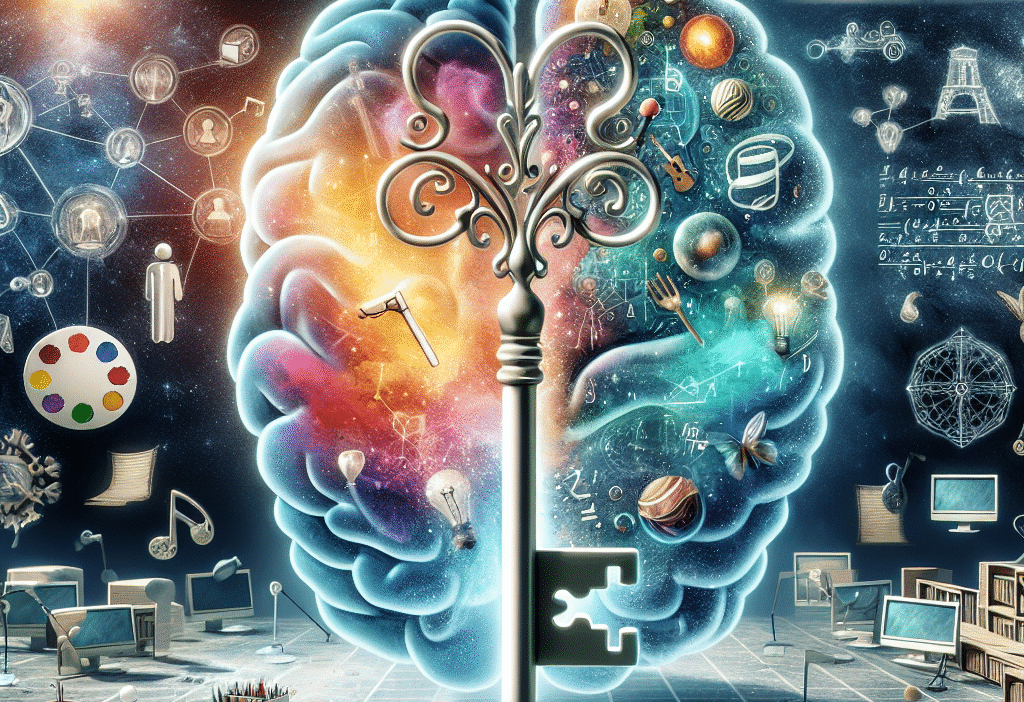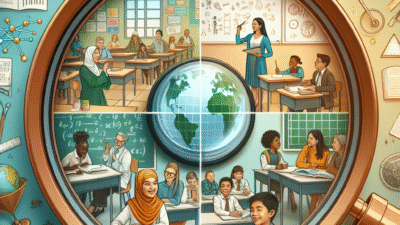In the evolving landscape of education, understanding how our students learn is paramount. The concept of "Unlocking Potential: How Multiple Intelligence Theory Transforms Education" has emerged as a beacon of hope. It encourages educators to move beyond traditional teaching methods and embrace diverse learning styles. This article delves deep into how the theory of multiple intelligences, proposed by Dr. Howard Gardner, is redefining educational practices, promoting inclusivity, and unlocking the potential of each learner.
Introduction
Imagine a classroom where every student shines uniquely, demonstrating their strengths while addressing their weaknesses. This ideal classroom doesn’t have to be fictional. Multiple Intelligence Theory (MIT) empowers educators to achieve just that. By recognizing the varied ways students process information, educators can tailor their teaching strategies to meet individual needs.
This article will explore the foundational principles of MIT, its significance in modern education, actionable strategies for implementation, and its transformative impact on student outcomes. Whether you’re an educator, policymaker, or parent, there’s something here for everyone eager to unlock potential.
Understanding Multiple Intelligence Theory
Multiple Intelligence Theory proposes that intelligence is not a single entity but a spectrum of various forms. Gardner identified nine distinct types of intelligence:
- Linguistic Intelligence: The ability to use words effectively.
- Logical-Mathematical Intelligence: Proficient in reasoning and problem-solving.
- Spatial Intelligence: The ability to visualize and manipulate objects.
- Bodily-Kinesthetic Intelligence: The skill in using one’s body for expression or to solve problems.
- Musical Intelligence: The capability to discern sounds, rhythms, and pitches.
- Interpersonal Intelligence: The ability to interact well with others.
- Intrapersonal Intelligence: The capacity for self-awareness and reflection.
- Naturalist Intelligence: The ability to recognize and categorize plants, animals, and other aspects of the natural world.
- Existential Intelligence: The sensitivity to deep questions about human existence.
By recognizing these distinct intelligences, educators can transform how they approach each student’s learning journey.
Why Multiple Intelligence Theory Matters in Education
Personalization: Traditional education often emphasizes linguistic and logical-mathematical intelligences, leaving students with other strengths feeling overlooked. Using MIT, educators can create personalized learning experiences that resonate with a diverse student population.
Engagement: Engaged students learn more effectively. When education is tailored to a student’s intelligence type, it naturally becomes more engaging. For instance, a student with musical intelligence may thrive in a lesson that uses rhythmic activities to teach math fundamentals.
Inclusivity: MIT promotes inclusivity, allowing all students to participate meaningfully in learning activities. This is particularly crucial for students with learning disabilities or those who struggle with traditional teaching methods.
- Holistic Development: Education is not merely about academic success. MIT encourages a broader perspective of intelligence, nurturing emotional and social skills that are critical for life beyond the classroom.
Implementing Multiple Intelligence Theory: Step-by-Step
Here are steps to effectively implement MIT in the classroom:
Step 1: Assess Students’ Intelligence Types
Using surveys, quizzes, or informal assessments, determine the dominant intelligence types of your students. This initial understanding sets the stage for personalized learning.
Step 2: Design Diverse Learning Activities
Craft lessons that cater to each intelligence type. Here are some activity examples:
Linguistic Intelligence: Encourage students to write stories or create poems connected to a lesson.
Logical-Mathematical Intelligence: Incorporate puzzles and logical games into lessons.
Spatial Intelligence: Use diagrams, art projects, or visual presentations to enhance understanding.
Bodily-Kinesthetic Intelligence: Integrate role-playing or hands-on activities.
Musical Intelligence: Use songs, raps, or rhythms for memorization and engagement.
Interpersonal Intelligence: Promote group projects and collaborative learning.
Intrapersonal Intelligence: Allow students to keep journals or participate in self-reflective activities.
Naturalist Intelligence: Use the outdoors for science exploration or nature-based assignments.
- Existential Intelligence: Discuss big questions around ethics, philosophy, or the universe’s mystery.
Step 3: Foster a Supportive Environment
Create a safe space where students feel comfortable expressing their unique capabilities. This is critical in building confidence and encouraging exploration.
Step 4: Implement Technology
Utilize tools and platforms that cater to different intelligences. For example, interactive simulations can aid logical-mathematical learners, while video platforms can engage visual-spatial learners.
Step 5: Evaluate and Adjust
Continuous assessment is vital. Gather feedback from students on what they liked and what didn’t resonate. Adapt your strategies accordingly.
Case Studies of MIT in Action
While we won’t delve into specific case studies, it’s essential to recognize schools and educators worldwide are already experiencing the benefits of MIT. For instance, schools that have adopted MIT have reported increased student engagement, improved self-esteem, and higher academic performance.
Visual Representation of Multiple Intelligences
Below is a chart summarizing the nine types of intelligence and corresponding teaching methods:
| Intelligence Type | Characteristics | Teaching Methods |
|---|---|---|
| Linguistic | Strong verbal skills | Writing assignments, storytelling, debates |
| Logical-Mathematical | Strong logic and reasoning | Problem-solving, math games |
| Spatial | Strong visual and spatial judgment | Map-making, visual arts, diagrams |
| Bodily-Kinesthetic | Good coordination and physical skills | Role-playing, hands-on activities |
| Musical | Sensitive to rhythm, pitch, and tone | Songs, musical instruments |
| Interpersonal | Strong social skills | Group work, peer teaching |
| Intrapersonal | Strong self-awareness | Journaling, self-reflective tasks |
| Naturalist | Good observation of nature | Nature walks, biology classes |
| Existential | Deep thinkers | Philosophical discussions, debates |
The Transformative Power of MIT on Student Outcomes
Implementing MIT has profound implications for student outcomes. Here’s how:
Academic Improvement: With lessons tailored to students’ intelligence types, academic performance has seen measurable increases. Students engage better with content they connect with, resulting in higher test scores and grades.
Social Skills Development: Engaging with peers through diverse activities fosters teamwork and communication skills, essential for future endeavors.
Self-Confidence: When students see their unique strengths being recognized, their self-esteem flourishes. For instance, a student with naturalist intelligence who thrives in outdoor settings may gain newfound confidence when given opportunities to lead botanical projects.
- Critical Thinking: An engaging and diverse learning environment encourages students to think critically about their knowledge and experiences.
Conclusion
Unlocking Potential: How Multiple Intelligence Theory Transforms Education is not merely a catchphrase; it’s a movement towards inclusive, personalized, and holistic education. By understanding and implementing multiple intelligences, educators have the opportunity to cultivate an environment where every student’s potential can shine.
As we embrace this transformative approach, let us aim to inspire a future where every learner feels valued, engaged, and successful. Remember, every child has strengths waiting to be unlocked.
FAQs
1. What is Multiple Intelligence Theory?
Multiple Intelligence Theory, proposed by Howard Gardner, suggests there are various types of intelligence. It emphasizes that everyone has unique strengths and ways of learning.
2. How can teachers implement MIT in the classroom?
Teachers can assess students’ intelligence types and design varied learning activities that cater to these intelligences, ensuring a more personalized and engaging education.
3. Is MIT applicable for all grade levels?
Yes, MIT can be implemented across all education levels and adapted to suit the developmental stages of learners.
4. What are some effective teaching strategies for different intelligences?
Strategies include storytelling for linguistic learners, group projects for interpersonal learners, and nature-based activities for naturalist learners.
5. Can MIT improve academic performance?
Yes, research indicates that when students’ learning styles are catered to, engagement and performance often improve significantly.
This ultimate guide on Unlocking Potential: How Multiple Intelligence Theory Transforms Education has provided insights into the transformative power of tailoring education to each learner’s strengths. Through thoughtful application and continuous adaptation, educators can create a thriving educational landscape that beckons each student to unlock their potential fully.
For more resources on enhancing educational practices, visit MyJRF.
Feel free to reach out for any further questions or clarifications! We’re here to help you unlock the full potential of yourself and your students. 😊





